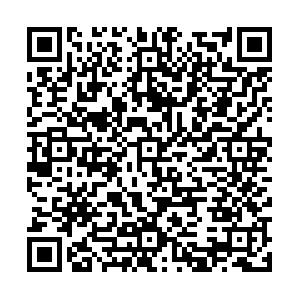Influencing factors of COVID-19 epidemic on the utilization of Human immunodeficiency virus testing among men who have sex with men
-
摘要:
目的 分析COVID-19疫情时MSM的HIV检测服务利用及相关影响因素。 方法 2020年9月—2020年11月,在深圳市龙华区疾病预防控制中心艾滋病自愿检测与咨询室、深圳市第三人民医院对MSM进行电子问卷调查,采用秩和检验比较各因素不同情况中的HIV检测服务利用,并建立有序多分类Logistic回归分析模型分析HIV检测服务利用的影响因素。 结果 研究对象疫情期间HIV检测服务利用减少的比例较高(30.4%),多因素分析结果显示,对COVID-19高度恐慌、肛交性行为频率减少(OR=0.056, 95% CI: 0.021~0.150, P<0.001)、男性伴侣/男朋友建议不要去检测机构(OR=0.538, 95% CI: 0.297~0.975, P=0.041)、感染了COVID-19(OR=21.979, 95% CI: 4.369~110.559, P<0.001)的MSM人群HIV检测服务利用次数减少可能性更大。 结论 COVID-19疫情期间MSM人群HIV检测服务利用下降,在制定及实施疫情防控措施时需加强关注。 Abstract:Objective To analyze the utilization of HIV testing services and related influencing factors among men who have sex with men (MSM) on COVID-19. Methods From September to November 2020, an electronic questionnaire survey was conducted on MSM in the AIDS Vct of Longhua CDC and the Third People's Hospital of Shenzhen, The rank sum test was used to compare the changes in the utilization of HIV testing services in different situations of various factors, and ordinal multinomial logistic regression model was established to analyze the influencing factors of the utilization of HIV testing services. Results A total of 30.4% MSM were reported reduction in the use of HIV testing services. Logistic regression analysis showed that highly panic of COVID-19 reducing the frequency of anal sex (OR=0.056, 95% CI: 0.021-0.150, P < 0.001), being advised not going to testing agency (OR=0.538, 95% CI: 0.297-0.975, P=0.041), and being infected of COVID-19 (OR=21.979, 95% CI: 4.369-110.559, P < 0.001) had higher chance of reduction in the used of HIV testing services. Conclusion The HIV testing service utilization is decreased in MSM during COVID-19. It is necessary to pay more attention to this convenience when formulating and implementing epidemic prevention and control measures. -
表 1 HIV检测服务利用影响因素的单因素分析[n(%)]
Table 1. Single factor analysis of HIV testing services [n(%)]
变量 减少(n=184) 无变化(n=388) 增加(n=34) 合计(N=606) H值 P值 年龄(岁) 0.562 0.905 18~ < 25 58(31.0) 121(64.7) 8(4.3) 187 25~ < 30 68(30.1) 147(65.0) 11(4.9) 226 30~ < 35 32(27.1) 80(67.8) 6(5.1) 118 ≥35 26(34.7) 40(53.3) 9(12.0) 75 情感状态 2.219 0.528 单身 124(29.5) 276(65.7) 20(4.8) 420 与男性同居 29(32.2) 58(64.5) 3(3.3) 90 分居或离异或丧偶 24(32.4) 45(60.8) 5(6.8) 74 与女性同居或已婚 7(31.8) 9(40.9) 6(27.3) 22 文化程度 1.228 0.541 初中及以下 22(31.9) 36(52.2) 11(15.9) 69 高中或中专 39(31.4) 75(60.5) 10(8.1) 124 大专及以上 123(29.8) 277(67.1) 13(3.1) 413 性取向 0.224 0.894 同性恋 128(29.3) 289(66.1) 20(4.6) 437 双性恋 42(35.6) 64(54.2) 12(10.2) 118 不确定 14(27.5) 35(68.6) 2(3.9) 51 检测机构预防新冠肺炎措施 4.791 0.091 无效 23(24.5) 62(65.9) 9(9.6) 94 中立 50(26.9) 129(69.3) 7(3.8) 186 有效 111(34.1) 197(60.4) 18(5.5) 326 COVID-19恐慌程度 11.103 0.004 轻微 42(25.0) 113(67.3) 13(7.7) 168 中等 70(27.4) 171(67.1) 14(5.5) 255 高度 72(39.4) 104(56.8) 7(3.8) 183 无法获取艾滋病自检试剂 1.219 0.270 是 19(45.2) 17(40.5) 6(14.3) 42 否 165(29.2) 371(65.8) 28(5.0) 564 男性伴/男朋友建议疫情期间不要去检测机构 8.733 0.003 是 32(50.0) 27(42.2) 5(7.8) 64 否 152(28.0) 361(66.6) 29(5.4) 542 肛交性行为频率 121.580 <0.001 减少 140(57.6) 92(37.9) 11(4.5) 243 不变 40(11.9) 280(83.3) 16(4.8) 336 增加 4(14.8) 16(59.3) 7(25.9) 27 朋友/家人感染COVID-19 0.179 0.672 是 2(28.6) 4(57.1) 1(14.3) 7 否 182(30.4) 384(64.1) 33(5.5) 599 COVID-19感染者 7.812 0.005 是 1(12.5) 3(37.5) 4(50.0) 8 否 183(30.6) 385(64.4) 30(5.0) 598 居家或集中隔离 1.168 0.280 是 32(34.8) 56(60.9) 4(4.3) 92 否 152(29.6) 332(64.6) 30(5.8) 514 尽可能的减少不必要外出 3.227 0.072 是 127(31.9) 255(64.1) 16(4.0) 398 否 57(27.4) 133(63.9) 18(8.7) 208 避免去人流密集的场所 2.426 0.119 是 135(32.1) 265(62.9) 21(5.0) 421 否 49(26.5) 123(66.5) 13(7.0) 185 表 2 影响HIV检测服务的多因素Logistic回归分析模型分析
Table 2. Logistic regression analysis of factors related to HIV testing services
变量 β值 sx值 Wald值 OR(95% CI)值 P值 COVID-19恐慌程度 轻微 0.547 0.242 5.119 1.728(1.076~2.777) 0.024 中等 0.353 0.216 2.685 1.424(0.933~2.173) 0.101 高度 1.000 肛交性行为频率 减少 -2.881 0.501 33.038 0.056(0.021~0.150) <0.001 无变化 -0.916 0.485 3.565 0.400(0.155~1.030) 0.059 增加 1.000 无法获取艾滋病自检试剂 是 -0.030 0.361 0.007 0.970(0.478~1.967) 0.933 否 1.000 男性伴侣/男朋友建议不要去检测机构 是 -0.620 0.304 4.176 0.538(0.297~0.975) 0.041 否 1.000 感染COVID-19 是 3.090 0.824 14.056 21.979(4.369~110.559) <0.001 否 1.000 -
[1] Zhu N, Zhang D, Wang W, et al. A novel coronavirus from patients with pneumonia in China, 2019[J]. N Engl J Med, 2020, 382(8): 727-733. DOI: 10.1056/nejmoa2001017. [2] 王琪, 侯元, 连英姿. 男男同性恋人群艾滋病、性病感染状况研究[J]. 海峡预防医学杂志, 2009, 15(3): 11-12. DOI: cnki:sun:hxyf.0.2009-03-007.Wang Q, Hou Y, Lian YZ. Investigation on the Infection of HIV and Sex Transmitted Diseases in Male Homosexual Population[J]. Strait Journal Of Preventive Medicine, 2009, 15(3): 11-12. DOI: cnki:sun:hxyf.0.2009-03-007. [3] Li ZJ, Chen QL, Feng LZ, et al. Active case finding with case management: the key to tackling the COVID-19 pandemic[J]. Lancet, 2020, 396(10243): 63-70. DOI: 10.1016/s0140-6736(20)31278-2. [4] 罗芳, 罗丹, 王彬, 等. 新型冠状病毒肺炎疫情期间湖北非武汉地区居民焦虑和抑郁状况及其影响因素[J]. 中华疾病控制杂志, 2020, 24(6): 643-648. DOI: 10.16462/j.cnki.zhjbkz.2020.06.005.Luo F, Luo D, Wang B, et al. Analysis of anxiety and depression of residents outside Wuhan in Hubei Province during the outbreak of COVID-19 and its influencing factors[J]. Chin J Dis Control Prev, 2020, 24(6): 643-648. DOI: 10.16462/j.cnki.zhjbkz.2020.06.005. [5] Sanchez TH, Zlotorzynska M, Rai M, et al. Characterizing the impact of COVID-19 on men who have sex with men across the United States in April, 2020[J]. AIDS Behav, 2020, 24(7): 2024-2032. DOI: 10.1007/s10461-020-02894-2. [6] Times P. Drug shortage concerns are top of mind amid COVID-19 outbreak[EB/OL]. (2020-03-21)[2021-04-12]. https://www.pharmacytimes.com/news/drug-shortage-concerns-are-top-of-mind-amid-covid-19-outbreak. [7] Santos GM, Ackerman B, Rao A, et al. Economic, mental health, HIV prevention and HIV treatment impacts of COVID-19 and the COVID-19 response on a global sample of cisgender gay men and other men who have sex with men[J]. AIDS Behav, 2021, 25(2): 311-321. DOI: 10.1007/s10461-020-02969-0. -




 下载:
下载: 